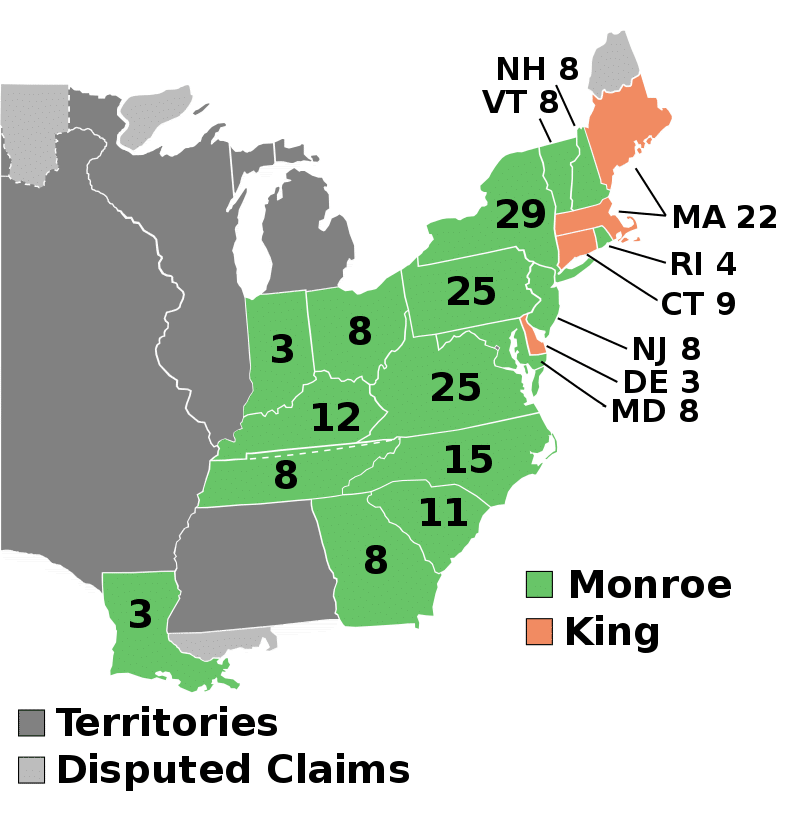President James Madison ended his tenure by ushering in the "Era of Good Feelings," and his Secretary of State, James Monroe, would capitalize.

Towards the end of the War of 1812, the Federalists talked of cessation, and then the United States won the Battle of Lake Erie, Battle of the Thames, Battle of New Orleans, and ended the war with the Treaty of Ghent which discredited the party and they quickly dissolved.
The candidates of the Election of 1816 are as follows:
- Democratic-Republicans: James Monroe and Vice President Daniel D. Tompkins
- Federalists: Rufus King and Vice President John E. Howard
Presidential Election of 1816 Facts: Platforms
Democratic-Republicans: The War of 1812 was over, the economy was booming, there was a surge of nationalism throughout the country, and a new era was beginning. Monroe had been through the tough times and the good, and folks wanted more of the same.
Federalists: The Federalists had been discredited, and unlike the Election of 1812, there was not an opportunity to blend the ticket with disaffected Democratic-Republicans. They came in with the candidate of Rufus King and a little momentum. This would be the end of the Federalist Party as they had never been able to gain stability or influence after the death of Alexander Hamilton.
Presidential Election of 1816: Outcome
With endorsements from Thomas Jefferson and James Madison, the victory in the General Election was much easier compared to the Democratic-Republican caucus.
The election ended the Federalist Pary, and James Monroe knew it. After his victory and during his inauguration, he made an appeal to Federalists as well and even borrowed some of their ideas during his presidency. This would set him up for a sweeping victory in the Election of 1820.
In the end, James Monroe won 183 electoral votes to 34. Only Maine and a portion of New England stayed loyal to the Federalist Party.
